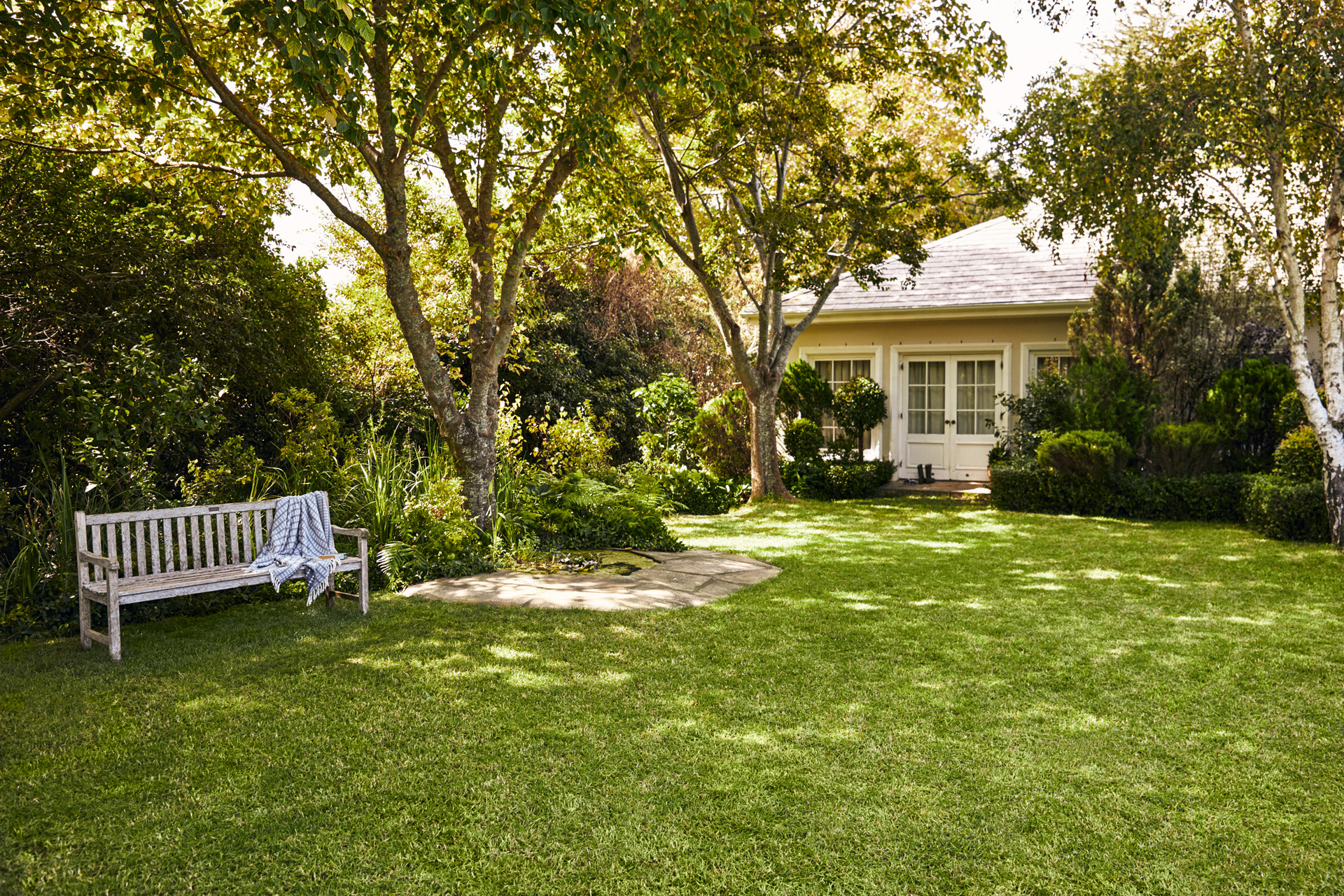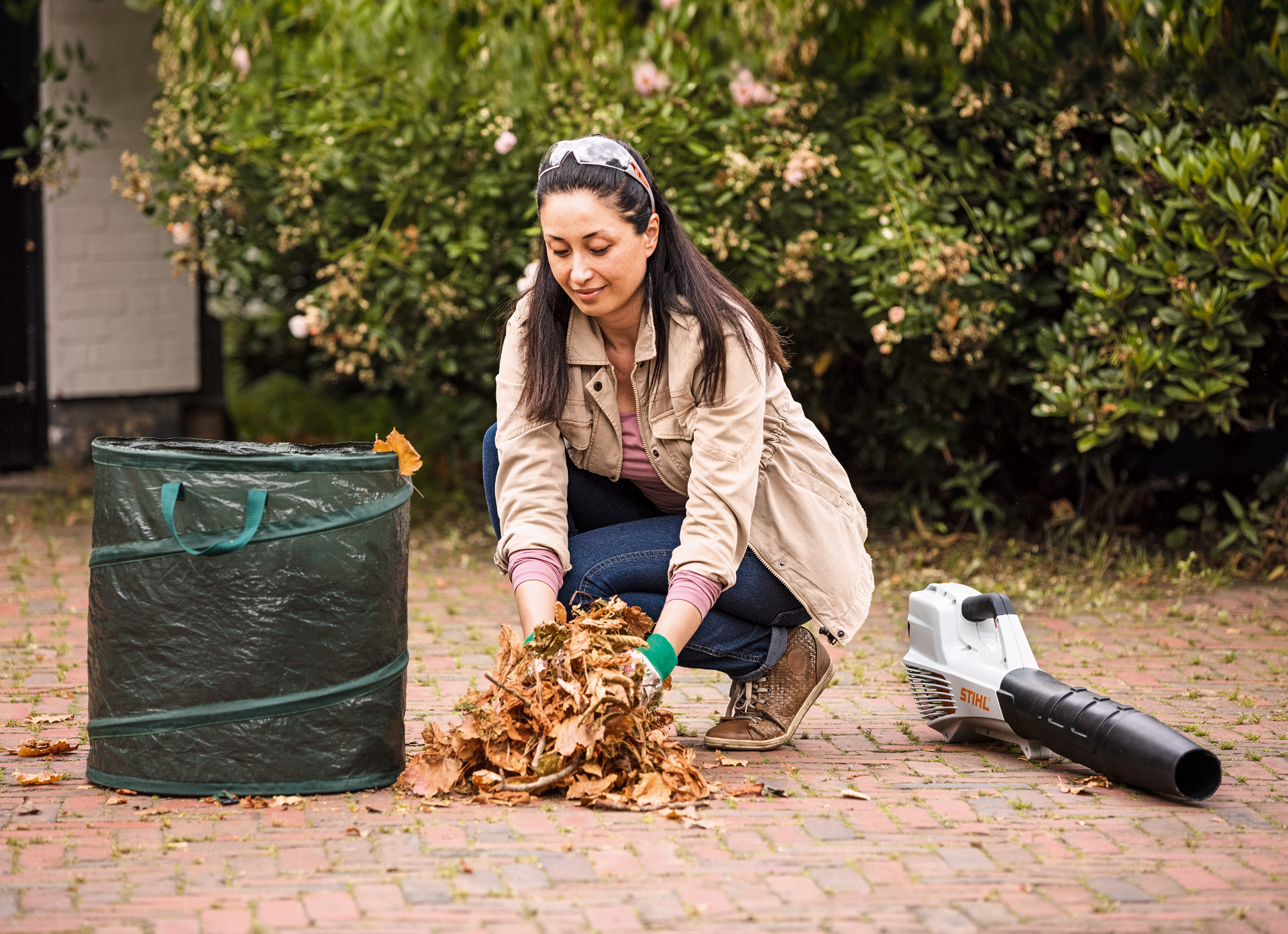Gardening in autumn
When autumn comes, the gardening year is not yet done. Get the most out of your outdoor space and prepare it for the season ahead with our tips.
15.05.2023

Autumn gardening: planning and preparation
The arrival of autumn is unmistakable, with colourful leaves and cooler temperatures. The impending cold season doesn’t just affect trees; all plants adjust to the changing conditions, and many areas of your garden need less attention. But even though established plants are slowing down, it’s a good time for planting spring-flowering bulbs and garlic, along with other vegetables that are happy to be overwintered. We have compiled a month-by-month summary of gardening tasks to take you through the season.
As plants are dying back or dropping leaves, autumn is also a good time to look at the overall structure of your garden. What do you want to keep, and what can go? What new plants would you like to add?
Autumn gardening tasks
- Collecting seeds
- Planting bulbs
- Raking and clearing leaves
- Overseeding lawn (until the end of September)
- Fertilising the lawn
- Trimming woody plants and hedges
- Digging over the soil
September gardening: summer’s swansong
The soil is still warm, so this is a good time to sort out any bare patches of lawn by reseeding – for a uniform appearance, try to use the same lawn seed mix as the existing lawn. Start by clearing any weeds from the lawn, then use the lawn mower to cut the grass short. This makes sure the seeds don't get caught up in any longer areas of grass. Loosen the soil with a scarifier or garden fork and scatter the grass seed evenly. Alternatively, you can mix the grass seed with earth and spread it on the loosened soil; this will help weigh the seed down and prevent birds from eating it too.

If you really want a lush lawn next season, we recommend you add a dose of seasonal fertiliser to your autumn gardening schedule. Autumn lawn fertilisers are high in potassium, making your grass more robust and more resistant to frost. Regular mowing can continue until the first frost. You will find more tips on lawn care in autumn in our handy guide.
Autumn leaves can start falling from the trees as early as September, but this often doesn't happen until the first frost, so raking should not be an arduous job just yet.
Seed saving is a great – and free – way to get the most out of your plants, and late August to early September is the perfect time to harvest seeds in your garden. As soon as the first seeds dry on the plants, you can collect them – don’t harvest them too early as only ripe seeds will germinate reliably later on. When fruit clusters start to brown, they’re ready to collect. Keep seeds in a dark, dry place over winter, and take particular care to ensure they are completely dry before packing them, so they don't rot or go mouldy. In addition to the financial saving, the real benefit of collecting your own seeds when gardening is that you already know that the plants are suited to the conditions in your garden. This is a great way to make sure that future generations of plants will also thrive in that location.
Another September gardening tip is to make sure you clear away any windfall fruit on the ground. Leaving fruit on the grass in autumn can crush the lawn and starve it of light, making it vulnerable to disease. Old fruit can also attract insects – though many welcome garden creatures such as hedgehogs will appreciate the odd bite of fruit, so don’t worry too much if a couple of apples are left behind.
It’s not all work in the garden at this time of year: you can enjoy late summer blooms, the last of the roses and summer flowers, not to mention many beautiful autumn-flowering plants.

Autumn-flowering plants:
- Michaelmas daisy
- Anise hyssop
- Dahlia
- Syringia
- Autumn anemone
- Autumn saxifrage
- Turtlehead

October gardening: pruning and planting
Golden October brings a chill to the air – and probably the first frost of the season. Now is the time to cut back woody plants and hedges if necessary. You should also remove dead or damaged branches and anything that looks sickly.
In October, the shorter days and colder weather will see some plants retreat into the soil – perennials will wait there to unleash all their stored goodness once the weather warms up. In gardening terms, this is a good time to clear out the beds in your garden and winterproof them. Remove any dead or dying plants; cut vigorous shrubs right back so that they can come back strongly next year. Woody plants are much easier to trim and manage in autumn when they lose their leaves, though many trees prefer to be pruned when it’s even colder – apples and pears should only be cut back from November, for example.
October gardening is still a good time for planting many things, as plants still have time to establish before the first frosty nights hit. Shrubs such as aster, as well as fruit trees and bare-root roses are ideal for planting now. Spring bulbs such as tulips, narcissus and crocuses can be planted too, using the rule of thumb that they are planted at a depth of three times the bulb’s size – so a bulb about 3 centimetres tall should be planted 9 centimetres deep. Take care with spacing; tulips need a little distance from their neighbours to prevent disease, and planting bulbs too closely may mean they deprive one another of nutrients. Cover the bulbs with some fresh soil and, if the soil is loamy, a little sand for drainage, and finish this gardening task by watering the bulbs in well.
STIHL pro tip: For a natural pattern when planting bulbs, stand in the middle of the bed and throw the bulbs in the air. Plant them where they land. This will give you a genuinely random pattern.
Did you know that it is very easy to grow your own garlic? It’s a quick job to add to your October gardening: push individual cloves a few centimetres into the soil, spacing them around 10 centimetres apart. Frost and winter weather do not bother garlic, and you can look forward to harvesting fresh garlic bulbs in May.
What to plant in autumn:
- Woody plants in containers
- Bare-root woody plants
- Grasses
- Shrubs in beds
- Rockery shrubs

November gardening: the coldest season is coming
Clear leaves from your lawn to prevent grass from getting fungal diseases such as snow mould (Fusarium patch). As an alternative to raking up the leaves, you can simply mow over them. Your mower collection basket will fill up with a mix of grass and shredded leaves, which is great for composting.
Remember to spend some of your autumn gardening time on your trees. Without their leaves, the shape of trees becomes more clearly visible, making it easier to decide where to prune. For most trees, you can tackle this any time until March. Evergreen, hardy perennials that remain in the garden over winter benefit from regular watering on non-frosty days, during dry periods. In frosty conditions, plants lose water through evaporation from their leaves but can't absorb new water from the soil. If you prepare your garden for the winter in November, it will thrive in the coming spring.
Summary: autumn gardening
- Autumn is a time of change and preparation for the following year.
- From September you can check your lawn for damage, and reseed to repair it.
- Seeds can be collected and dried until October.
- Autumn is the perfect time to plant spring bulbs such as tulips. You can also plant shrubs and trees now.
- From November, the coldest conditions start taking hold so gardening should mean winterproofing.
- Take particular care to clear leaves from the lawn and dispose of them


